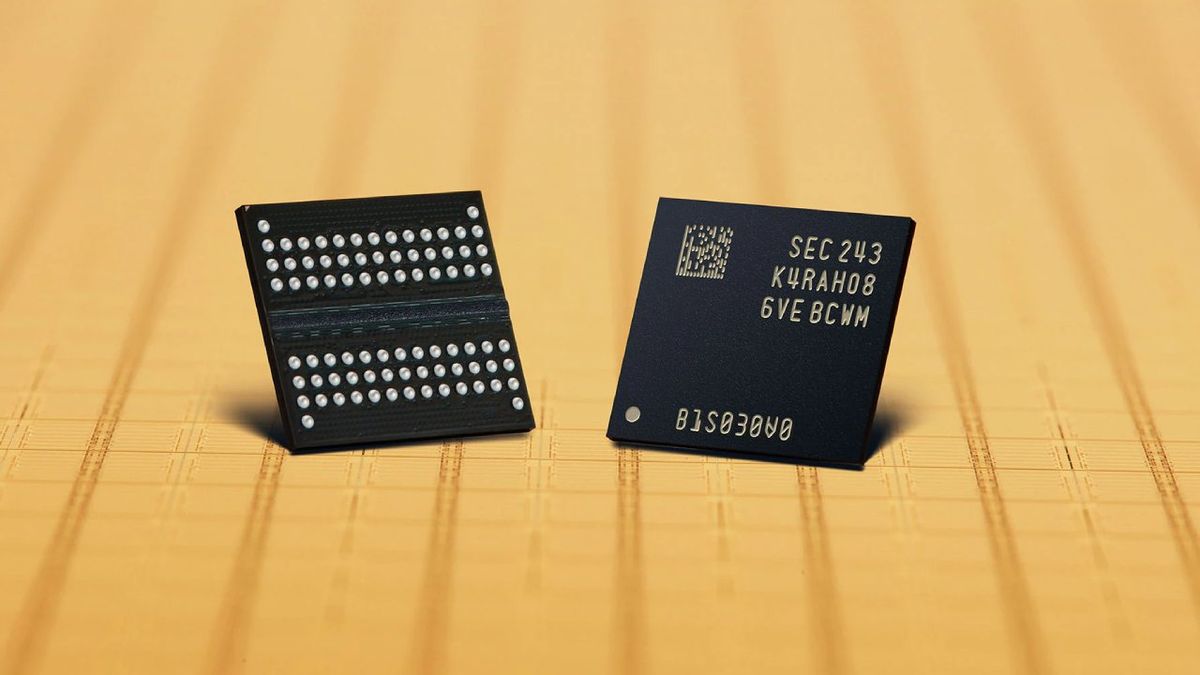Samsung has announced a new generation of DDR5 RAM (opens in new tab), claimed to be the world’s first “12nm class” memory. Samsung says compatibility evaluation with AMD Ryzen 7000 Series (opens in new tab) platforms is already complete, so the chips are ready to drop into AM5 motherboards.
This new 12nm-class DRAM is said to be good for speeds of up to 7.2Gbps, translating into 60GB/s of bandwidth at a system-wide level. Samsung also claims the new memory chips can stake claim to the industry’s highest data density.
“This technological leap was made possible through the use of a new high-K material that increases cell capacitance, and proprietary design technology that improves critical circuit characteristics. Combined with advanced, multi-layer extreme ultraviolet (EUV) lithography, the new DRAM features the industry’s highest die density, which enables a 20 percent gain in wafer productivity,” Samsung’s release says (opens in new tab).
Power consumption is also down by 23% compared with Samsung’s existing cutting-edge DDR5. The new DDR5 retains the same 16Gb per-chip capacity.
Of course, in all of this it’s worth noting the key qualifier, namely the use of the word “class”. Just as with the process technology used by Intel and TSMC for CPUs and GPUs, the term “12nm” doesn’t actually map to the physical size of elements within the memory chips. It’s more a relative term that positions the new memory in Samsung’s product stack.
By way of example, other memory manufacturers, including SK Hynix and Micron, make claim to 10nm-class DDR5 chips. And yet Samsung says this new DDR5 is the densest yet. Marketing numbers, eh?
Anyway, what we can hope for is that this “12nm” stuff drives down prices for DDR5 further on account of that new density. The chips should be smaller and cheaper to make. To that effect, Samsung says, “our 12nm-range DRAM will be a key enabler in driving market-wide adoption of DDR5 DRAM.”
As to when, exactly, this market-wide adoption will happen, it’s not absolutely imminent. Mass production is set to begin in 2023, so we’re probably at least three months away from seeing memory DIMMs with the new chips.
DDR5 prices have come down a lot since Intel’s Alder Lake became the first CPU to use the new standard late last year. But prices are still getting on for double that of DDR4. So here’s hoping this new 12nm Samsung kit keeps those prices tumbling, however big the bits inside actually are.





